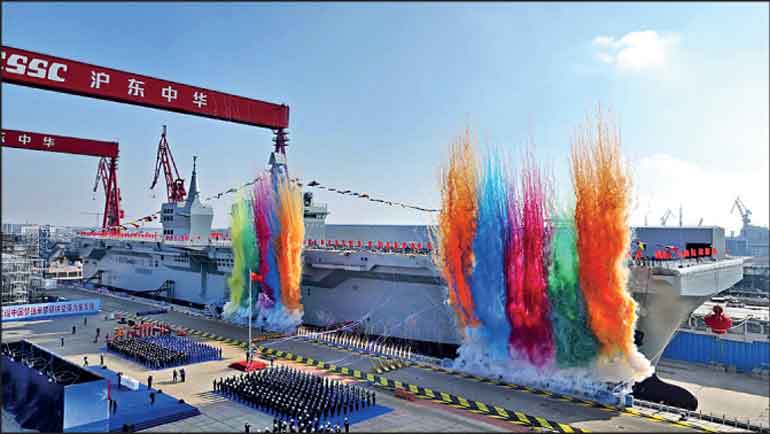Friday Dec 05, 2025
Friday Dec 05, 2025
Monday, 6 January 2025 00:00 - - {{hitsCtrl.values.hits}}

China launched its largest amphibious assault ship, the Sichuan, on 27 December 2024. This new warship is designed to strengthen China’s navy, especially in distant seas.
The Sichuan is the first ship of the Type 076 class and weighs 40,000 tons. It features advanced technology, including an electromagnetic catapult that will enable fighter jets to launch directly off its deck.
The ship also has arrestor technology, which helps planes land safely on its deck after completing their missions.
The Sichuan has been designed for more than just fighter jet launches. It’s also capable of deploying ground troops using landing crafts and providing air support to these troops during operations.
This makes it a highly versatile vessel that will greatly enhance China’s military capabilities, especially when operating away from its shores.
This ship is an upgrade from China’s previous amphibious assault ships, the Type 075, which were first launched in 2019.
Experts have compared the Sichuan to a “light aircraft carrier,” meaning it can perform many of the same tasks as an aircraft carrier but with a focus on amphibious operations.
China’s People’s Liberation Army Navy (PLAN) has been working on modernising its forces for over a decade.
The Sichuan will now undergo further testing, including sea trials before it can officially join the fleet. China’s naval ambitions don’t stop with the Sichuan.
Reports reveal that the country is also working on developing a nuclear-powered aircraft carrier, which would allow China’s navy to operate in far-off regions without the need to stop for refuelling. This will increase China’s ability to deploy ships around the world.
Currently, China has the largest navy in the world by fleet size, but the U.S. still holds an edge in terms of aircraft carriers. The U.S. has 11 nuclear-powered aircraft carriers, which allow it to maintain a global presence, including in the Asia-Pacific region.